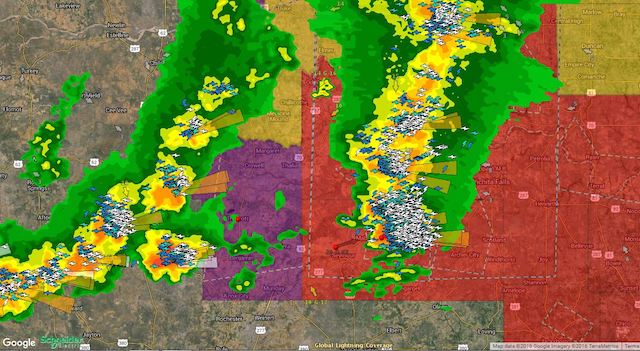Jim Foerster is the Director of Meteorological Operations for the Weather division of DTN. He responded to these questions via email late last spring:
What services and products are you marketing to athletic facilities?
Our WeatherSentry Sports Edition supplies detailed local forecasts based on our proprietary forecasting system, which is managed 24/7 by experienced meteorologists. You can anticipate conditions up to 15 days out, with hourly outlooks for the first 3 days.
Lightning Manager provides real-time lightning data, allowing for safer events with fewer interruptions. Monitor real-time lightning as it approaches your area, as well as set up custom advisory and warning zones for your location.
Storm Corridors is a storm tracking tool shows you where the severe weather is, where it is headed over the next 30 minutes, and what time it will reach locations in its path. In addition, storm attributes can be accessed to show specific details about individual storm cells, such as large hail or tornadoes.
Wet Bulb Globe observations, forecasts and alerts, which don’t require special equipment, can provide information to help meet NATA, NCAA, OSHA, and other industry safety protocols.
How does the consultant side work?
Our customers rely on our staff meteorologists to assist them 24/7 in making the critical decisions they are faced with surrounding safety and smooth management of events. Our weather consultants are degreed and certified meteorologists who work with a diverse client base.
WeatherSentry Online gives users the essential information they need along with frequent updates, but having a meteorologist familiar with your location and weather types can be invaluable.
What are the choices for monitoring lightning activity for lower budget facilities?
Users of WeatherSentry Online and our mobile extensions are allowed to set specific ranges within their application to be alerted for lightning, as well as directing those alerts to multiple recipients to provide clear and actionable guidance. Additionally, these alerts even “follow” users when travelling, providing a full safety net at all times.
Users of WeatherSentry Online are also able to set alerts for thunderstorms in the forecast, allowing for an extra level of preparedness. Users can also set an All Clear time for lightning.
What sources do you use to develop your weather information?
Much of the weather information we use comes from government sources and we augment that with private networks of data as well.
What are your recommendations for how facilities should best conduct “take cover” operations to protect players and fans?
Using online weather platforms and mobile apps that update at a very high frequency are the best tools. However if you are unable to access these, one of the best rules of thumb is the “30/30 rule,” which essentially entails counting the seconds after you see the lightning flash until you hear the associated thunder. If it is 30 seconds or less, the thunderstorm is within 6 miles and is a threat. If out in the open, immediately seek shelter indoors or in a hardtop, fully enclosed vehicle and remain until you have not heard thunder for 30 minutes.
Jim Foerster is the Director of Meteorological Operations for the Weather division of DTN. He is one of four Certified Consulting Meteorologists. Jim has a Bachelor’s Degree in Meteorology from the University of Wisconsin, Madison. In his spare time, Jim is a professional soccer coach in Bloomington, MN where he resides.


